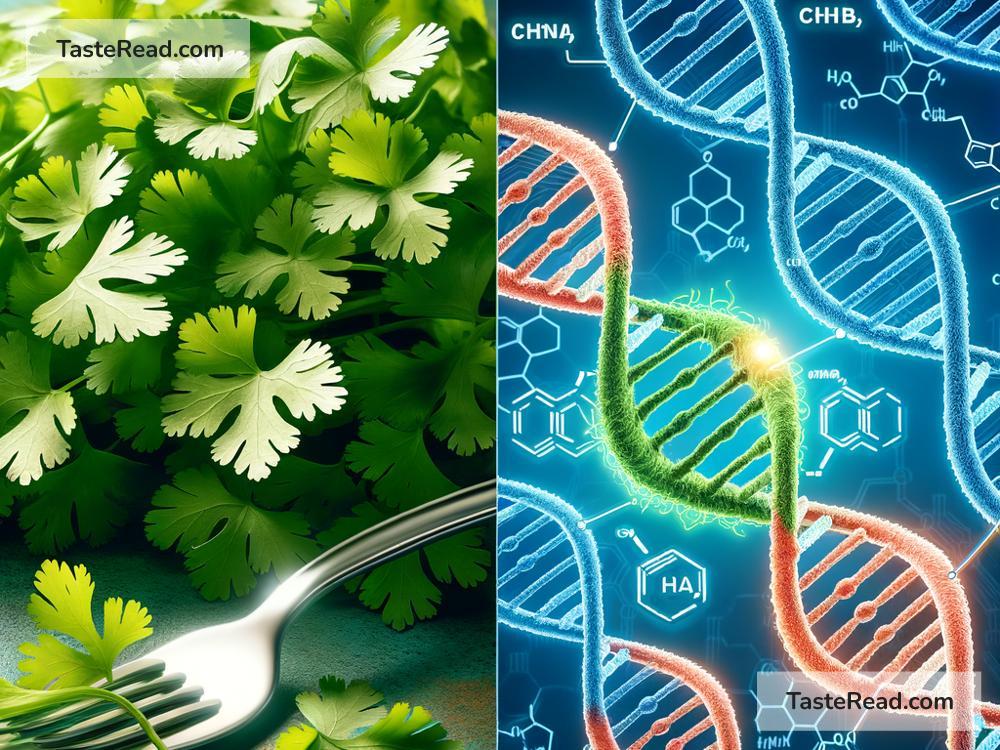The Science Behind the Genetic Link to Cilantro Taste Perception
Have you ever bitten into a taco topped with fresh cilantro and thought, “Wow, this tastes amazing!” or, on the other hand, spat it out in disgust because you thought it tasted like soap? If you’re in the second camp, don’t worry—you’re not alone. The love-it-or-hate-it relationship people have with cilantro has baffled chefs, scientists, and diners alike for years. But here’s the fun part: your opinion about cilantro may not just be a matter of preference. It could actually be written into your DNA.
Let’s explore the fascinating science behind the genetic link to cilantro taste perception!
What is Cilantro?
First, let’s clarify what cilantro is. Cilantro, also called coriander in some countries, is an herb commonly used in food around the world. In Mexico, it’s sprinkled on tacos. In Southeast Asia, it’s tossed into fresh salads and soups. And in Indian cuisine, it’s often blended into spicy curries and chutneys.
For most people, cilantro has a refreshing, citrusy flavor that adds zest to dishes. But for others, cilantro brings a weird, soapy taste that ruins their meal. Why does this happen? Scientists say it’s largely linked to genetics.
The “Soapy Taste” Mystery
The soapy taste associated with cilantro comes from compounds called aldehydes, which are naturally present in the herb. Aldehydes are organic molecules found in many things, including soaps and detergents. To certain people, the aldehydes in cilantro resemble the scent and flavor of soap.
Interestingly, aldehydes are also produced in the body when fatty acids break down, so they’re not as rare as they may seem. In foods, aldehydes can give off pleasant smells, like citrus or mint, but in cilantro, they sometimes get mistaken for soap. This odd flavor mismatch is where genetics comes into play.
The Genetic Culprit: OR6A2 Gene
The reason why some people taste soap when they eat cilantro comes down to a specific gene called OR6A2. This gene is part of your body’s system for detecting smells. It creates a receptor in your nose that detects aldehydes. People who have a certain variation of the OR6A2 gene are extra sensitive to the aldehydes in cilantro, which is why they interpret its taste as soapy.
This genetic discovery was first explored in a large genetic study conducted by researchers at 23andMe, a company that specializes in DNA testing. They analyzed genetic data from thousands of people and found that those who reported disliking cilantro often had a variation in the OR6A2 gene. This made them more likely to perceive aldehydes as something unpleasant, like soap.
What Percentage of People Are Affected?
So, how many people have this genetic aversion to cilantro? Studies show that roughly 4–14% of the population strongly dislike cilantro, depending on their geographical and cultural background. For instance, cilantro dislike is more common in people of European descent than in people from South Asian or Latino backgrounds, where cilantro is a staple in traditional cooking.
Why this difference? Scientists think it’s partly cultural. People raised in environments where cilantro is commonly used may develop an appreciation for the herb over time, even if their genetics predispose them to dislike it at first. It’s a combination of nature and nurture!
Can You Learn to Like Cilantro?
If you’re someone who detests cilantro, you might wonder: Is there any hope of retraining your taste buds? For some people, yes! Scientists have found that repeated exposure to cilantro can sometimes override genetic aversion. Your brain can begin to associate cilantro with positive experiences—like enjoying a delicious meal—and gradually stop focusing on the soapy flavor.
One way to ease into cilantro is by mixing it with strong, complementary flavors, like lime juice or garlic. These flavors can mask the soapy notes and help you appreciate the citrusy brightness cilantro brings to dishes.
Cilantro Love: It’s All in the Genes (and the Culture)
Whether you love cilantro or loathe it, understanding the science behind this unique taste is fascinating. Your DNA plays a big role in how you perceive flavors, but genetics isn’t the full story. Culture, environment, and food exposure also affect your preferences.
If you’re a cilantro lover, count yourself lucky—this versatile herb adds flavor and freshness to so many dishes. And if you’re a cilantro hater, don’t fret. The good news is that global cuisine has plenty of other fantastic herbs, like basil, parsley, and mint, that can stand in for cilantro in recipes. Your taste buds are unique, and that’s what makes food so personal and exciting.
What Does This Mean for Science and Food?
The genetic link to cilantro taste perception is just one example of how DNA influences our daily lives. As scientists learn more about taste, smell, and genetics, we may discover new insights into why people have different food preferences. This knowledge could even help chefs create meals tailored to individual tastes or help food companies design better products for a wider audience.
For now, whether you’re sprinkling cilantro on tacos or swapping it out for parsley, you can take comfort in knowing that your love or dislike of this divisive herb has a scientific explanation!
Food is more than fuel—it’s a sensory experience shaped by biology, culture, and memories. So the next time someone says cilantro tastes like soap or citrus, just remember: science is the reason for that debate. And isn’t science delicious?


